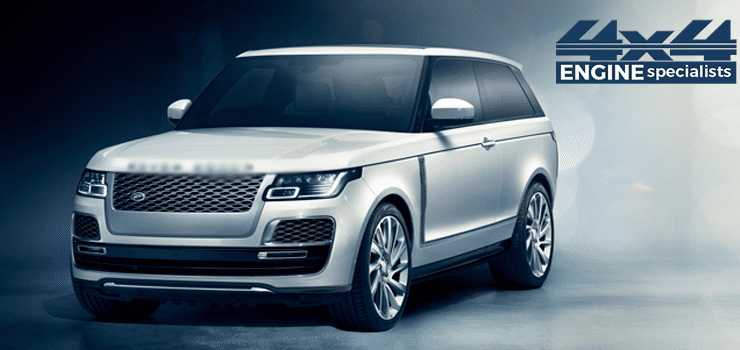Land Rover is a brand that is synonymous with quality, reliability and innovation. The company has been producing vehicles that can handle any terrain and weather condition for over 70 years. One of the key components of a Land Rover vehicle is its engine, which provides the power and performance that drivers expect from this iconic brand. In this article, we will explore how the Land Rover Engine 2.0 delivers superior performance and efficiency, and what makes it stand out from other engines in the market.
What is the Land Rover Engine 2.0?
The Land Rover 2.0 Engine is a four-cylinder, turbocharged, petrol engine that is part of the Ingenium family of engines. Ingenium is a modular engine architecture that allows Land Rover to produce engines with different displacements, outputs and configurations, while sharing common components and technologies. The Land Rover Engine 2.0 is available in two variants: the P250 and the P300.
The P250 variant produces 250 horsepower and 365 Nm of torque, while the P300 variant produces 300 horsepower and 400 Nm of torque. Both variants are paired with an eight-speed automatic transmission and a four-wheel drive system. The Land Rover Engine 2.0 can power various models of Land Rover vehicles, such as the Range Rover Evoque, the Range Rover Velar, the Discovery Sport and the Defender.
How does the Land Rover Engine 2.0 deliver superior performance?
The LandRover Engine 2.0 delivers superior performance by using several advanced technologies and features that enhance its power, responsiveness and smoothness. Some of these technologies and features are:
Twin-scroll turbocharger:
This technology uses two separate exhaust streams to drive the turbine, which reduces turbo lag and improves low-end torque.
Continuously variable valve lift:
This technology adjusts the valve lift according to the engine load and speed, which optimizes airflow and combustion efficiency.
Direct injection:
This technology injects fuel directly into the combustion chamber, which improves fuel atomization and reduces emissions.
Variable cam timing:
This technology adjusts the timing of the intake and exhaust valves according to the engine load and speed, which improves performance and efficiency.
Balancer shafts:
These devices counteract the vibrations caused by the four-cylinder configuration, which enhances smoothness and refinement.
How does the Land Rover Engine 2.0 deliver superior efficiency?
The LandRover Engine 2.0 delivers superior efficiency by using several advanced technologies and features that reduce its fuel consumption and emissions. Some of these technologies and features are:
Stop-start system:
This system automatically shuts off the engine when the vehicle is stationary, such as at a traffic light or in a queue, and restarts it when the driver presses the accelerator pedal, which saves fuel and reduces emissions.
Mild hybrid system:
This system uses a belt-integrated starter generator (BISG) to recover energy during deceleration and braking, and store it in a battery. The stored energy can then be used to assist the engine during acceleration or to power electrical accessories, which reduces fuel consumption and emissions.
Intelligent driveline dynamics:
This system monitors the vehicle’s speed, steering angle, throttle position and road conditions, and distributes torque between the front and rear wheels accordingly, which improves traction and stability, and reduces driveline losses.
Low-friction technologies:
These technologies include low-viscosity oil, low-friction coatings, roller bearings and electric water pump, which reduce friction within the engine components, which improves efficiency.
FAQs
What are the benefits of a four-cylinder engine over a six-cylinder engine?
A four-cylinder engine has several benefits over a six-cylinder engine, such as lower weight, lower cost, lower emissions and higher fuel economy.
How does the Land Rover Engine 2.0 compare to other engines in its class?
The LandRover Engine 2.0 compares favorably to other engines in its class, such as the BMW B48, the Mercedes-Benz M264 and the Audi EA888. The LandRover Engine 2.0 offers higher power output, higher torque output, higher compression ratio, lower fuel consumption and lower emissions than these engines.
How reliable is the LandRover Engine 2.0?
The LandRover Engine 2.0 is very reliable, as it has been extensively tested and validated under various conditions and environments. The engine also benefits from Land Rover’s warranty and service plans, which provide peace of mind to customers.
What kind of testing does the Land Rover 2.0 Engine undergo to ensure reliability?
The engine undergoes rigorous testing, including simulated extreme driving conditions and real-world testing, to ensure its reliability and longevity. This commitment to quality assurance contributes to the overall ownership experience.
Can the Land Rover 2.0 Engine be paired with different transmission systems?
Yes, the engine is intelligently paired with advanced transmission systems, such as eight-speed automatic transmissions. This ensures optimal gear ratios for smooth and precise shifts, contributing to improved drivability and fuel efficiency.
How does the user-friendly interface and connectivity features enhance the driving experience with the Land Rover 2.0 Engine?
The engine integrates seamlessly with user-friendly interfaces and advanced connectivity features, including intuitive infotainment systems and smartphone integration. This enhances the overall driving experience by providing easy access to information and entertainment options.


